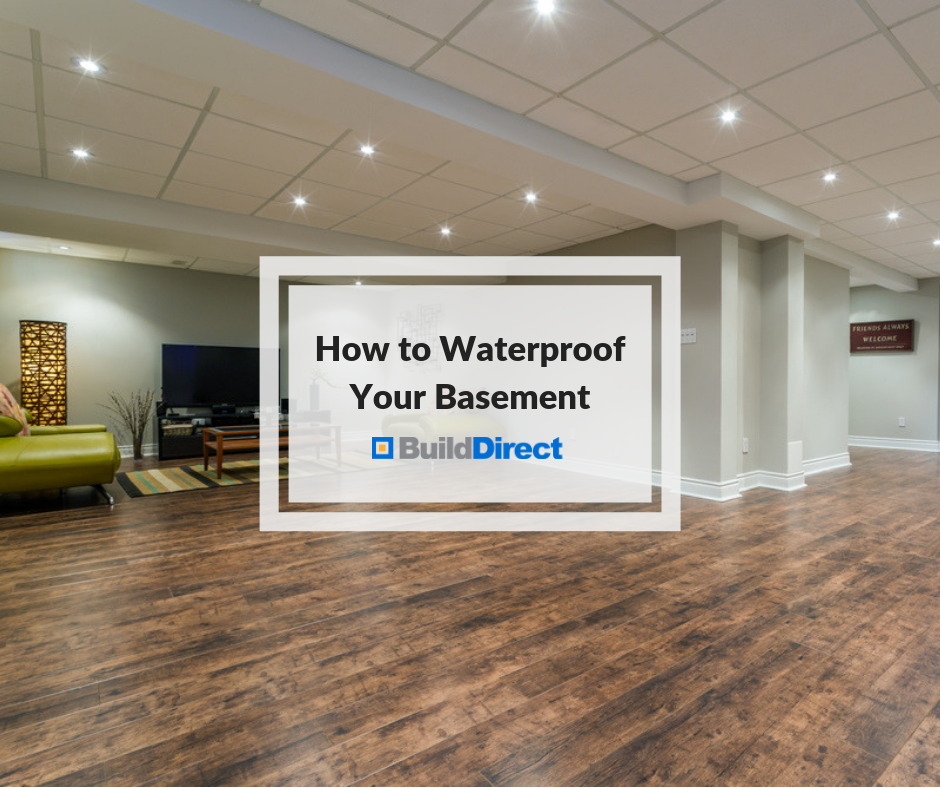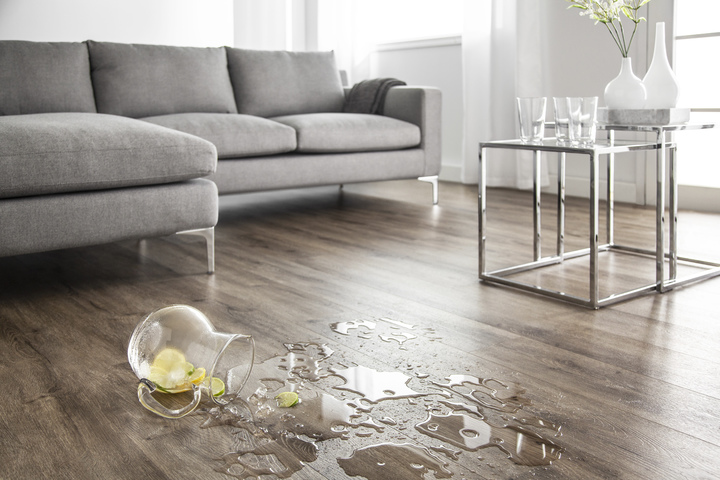How to Waterproof Your Basement

Coming down the stairs and discovering a wet basement can mean hours of work and damage to flooring and anything stored below the home. It’s better to have a waterproof basement to make it every bit as usable as the rest of your home. Keeping moisture out of the basement is all about understanding where the moisture Is coming from in the first place and preventing it from getting in.
What Causes Basement Moisture?
Because basements are subterranean rooms, they are highly susceptible to moisture. Before you can take steps to make the space waterproof, you must first evaluate the basement and the surrounding areas and determine how the water is getting into the space. Improper drainage around the perimeter of the home is the most common cause of leaks. Clogged gutters directing water toward the home, cracks in the basement walls, and condensation are also common causes.
Basement Waterproofing Solutions
A waterproof basement requires three areas of care. The inside of the basement, outside of the basement, and overall drainage of the property all need addressed to ensure water flows away from the home and not into the basement. Properly waterproofing a basement is a multi-approach process. The time and expense results in a functional added living area of the home.
Exterior Waterproofing
Water comes from the exterior of the home so exterior waterproofing is often the best way to prevent moisture from entering the basement.
Prepare the Exterior

When basements frequently leak, the problem usually begins on the outside. Getting the exterior of the home ready is no small task. However, it can greatly improve basement conditions. Begin by excavating the soil around the perimeter of the home until you have exposed the basement walls. For the best results, leave exterior basement waterproofing to the professionals, at is requires heavy-duty equipment and precise application.
Apply an Exterior Polymer Sealant
Preventing water from entering the home begins by applying a durable polymer sealant over the walls of the basement from the exterior of the home. Once applied, the exterior sealant will last the lifetime of the basement. Save yourself the headache of excavation by applying this coating at the time the house is built. If that isn’t an option, make it part of an overall landscaping project.
When you are putting all the soil back in place, make sure that the yard and flower beds angle away from the home. This directs water toward the street and away from the house. Make sure the yard is properly sloped away from the home. This is a great first step to try before going through the hassle and expense of sealing the outside of the basement walls.
Interior Waterproofing

Interior waterproofing is an easier process than exterior waterproofing. In some cases, it is enough to keep the water from damaging the contents of your basement.
Check for Cracks
Thoroughly clean the inside of the basement walls. As you do, look for any cracks in the grout or the walls. After youhave cleaned the surface of the walls, repair any cracks discovered during the cleaning with hydraulic cement. This material is easy to apply and expands to fill the cracks that may be allowing for water to seep through.
Add Sealants & Coatings
You can further waterproof a clean wall already filled with hydraulic cement by adding a sealant or other waterproof coating. Sealants are necessary for cement, concrete, or brick basement walls because these materials have pores that allow water to pass through. A sealant works to seal the natural pores in the material without taking away from the look of the walls. A good coating of sealant will also help to fill any hairline cracks you didn’t discover when cleaning the walls.
This waterproofing method is a great way to protect against condensation caused by changes in temperature and humidity. While they can help to keep moisture from entering the home, it does not prevent the moisture from coming towards the basement in the first place. To do that, proper drainage needs to be in place.
Drainage
With any property, proper drainage is essential to preventing damage to the home. Improper drainage can result in standing water that makes its way into the garage. Take a close look at your home during a storm or in the hours after a storm. If that is when water is entering the home, drainage may be a root problem. If drainage continues to be a problem, a sump pump may be necessary to prevent water from causing damage in the basement.
Choosing a Solution for a Waterproof Basement
Every home is designed differently. Take the time to carefully review the water problems in your basement and decide which waterproofing solutions are ideal for your property. One, two, or all of these basement waterproofing solutions may be necessary to make your subterranean space a dry place you can use as a reliable storage area or a true extension of the home.
Before you can transform any basement into a relaxing family retreat or a usable storage space, waterproofing measures need to be taken. Without proper preparation, water and moisture can enter the space. This leads to mold, mildew, and damage to the home. Once the waterproofing is complete, complete your basement refinishing project. Waterproof engineered hardwood or luxury vinyl flooring are great choices. They provides the sophisticated look of hardwood with the added benefit of being completely resistant to water and moisture.


